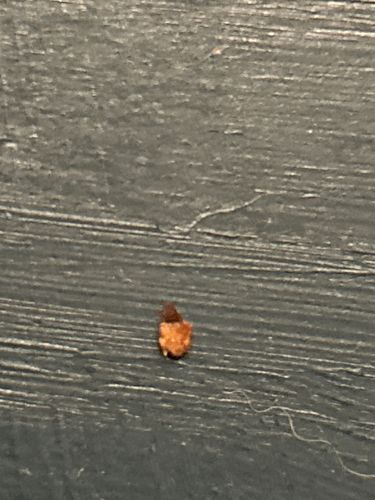Carpet Beetle Larva (likely Varied Carpet Beetle or Black Carpet Beetle)
Scientific Name: Likely *Anthrenus verbasci* (Varied Carpet Beetle) or *Attagenus unicolor* (Black Carpet Beetle), as the image shows a hairy, segmented larva, but specific species identification requires clearer detail.
Order & Family: Order: Coleoptera, Family: Dermestidae
Size: Larvae typically range from 2 mm to 5 mm in length.

Natural Habitat
Indoors, commonly found in homes, museums, and warehouses. They inhabit carpets, rugs, upholstered furniture, clothing, blankets, and areas where pet hair or lint accumulates. Outdoors, adult beetles are found on flowers, feeding on pollen and nectar.
Diet & Feeding
Carpet beetle larvae are scavengers, feeding on a wide variety of organic materials of animal origin. This includes wool, silk, feathers, leather, fur, pet hair, dead insects, museum specimens, taxidermy, and sometimes dried foods like cereals.
Behavior Patterns
Carpet beetle larvae avoid light and prefer dark, undisturbed areas. They are often found in cracks, crevices, under furniture, in closets, or inside heating ducts. Adults are attracted to light and are often found near windows. Their development from egg to adult can take several months to a year, depending on conditions and food availability. They undergo complete metamorphosis.
Risks & Benefits
Risks: Carpet beetle larvae can cause significant damage to household items made of natural fibers, including clothing, carpets, furniture, and historical artifacts. They do not bite humans or transmit diseases. Some individuals may experience allergic reactions to the larvae's shed skins or hairs. Benefits: In nature, they play a role as decomposers by consuming organic matter. However, their presence indoors is generally considered a pest issue.
Identified on: 8/9/2025